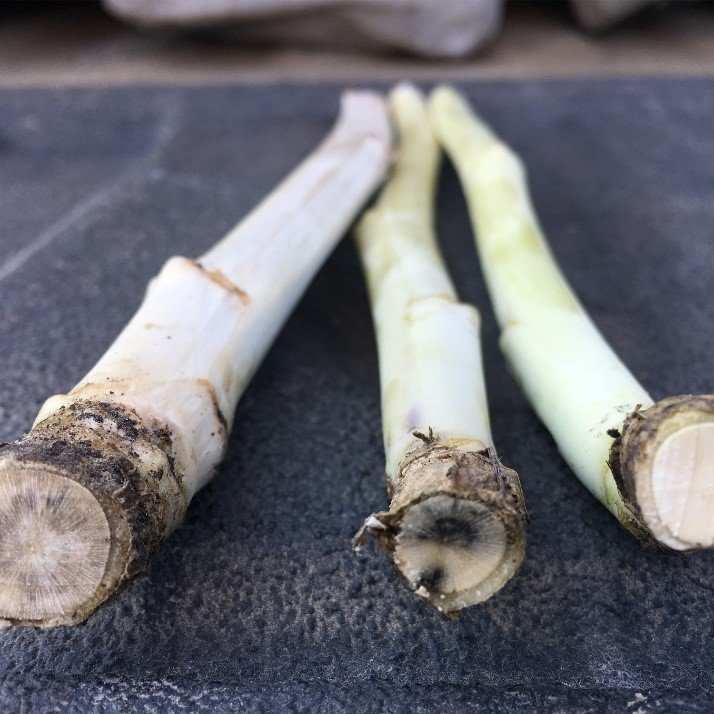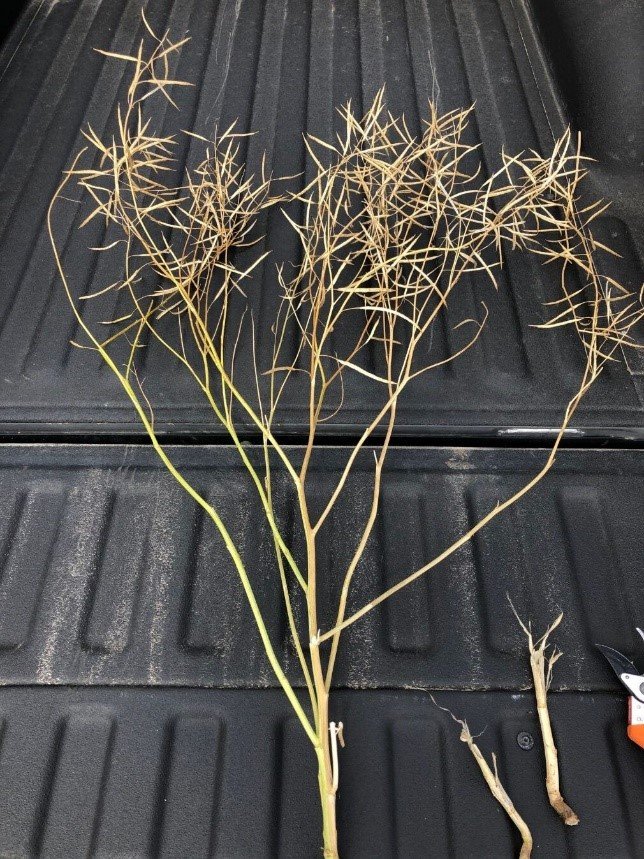Crop Diseases To Keep An Eye Out For
This year at the Manitoba Agronomists Conference Dr. James Menzies, Justine Cornelsen and Dr. Syama Chatterton highlighted three crop diseases: crown rust, verticillium stripe and Aphanomyces root rot. Here is what we learned from them.
Crown Rust
Crown rust in oats can cause 10-40% yield loss. This disease develops in the US under warm, dewy conditions. It then blows in from the south to infect our crops.
There are four ways to control this disease. The first is to seed oats early. This allows the crop to mature to a point where an infection wouldn’t cause serious yield loss. Another management tool is to avoid planting oats in fields that have weed hosts of the disease, such as buckthorn. Fungicides are another tool we can use against crown rust. Fungicides should be applied at the emergence of the flag leaf, before the disease has set in. Remember to rotate fungicides to prevent fungicide resistance!
The last way to prevent crown rust infection is through genetics. However, crown rust pathogens are constantly changing, making it hard for crop breeders to keep up to date. Pathogens change about every five years, making older resistant genes ineffective, while the average variety takes 12 years to come to market.
Verticillium Stripe
Verticillium stripe is becoming more common in canola in Manitoba. It presents itself similarly to blackleg. When cut, stems will show some blackening and microsclerotia will be present inside. Unlike blackleg, the blackening on the stem will be more of a grey starburst, starting from the inside out, than the black outer sections present with blackleg. The microsclerotia on the stem are also much smaller than the pycnidia with blackleg. The microsclerotia are so small that they can’t be felt on the stem, where as pycnidia will be raised off of the stem.
Verticillium stripe causes stunting in plants, early ripening, yellow leaves and eventually death in the affected parts of the stem.
Currently there is no way to control verticillium stripe. As a soil disease, the only way to prevent it from spreading is to prevent the movement of infected soil to other areas.
Verticillium Stripe | Canola Encyclopedia (canolacouncil.org)
Aphanomyces Root Rot
Aphanomyces root rot is one of the most destructive soil diseases in peas. Infected plants will begin to yellow from the bottom upwards. While blackened roots isn’t a symptom of Aphanomyces, plants that do have the disease will often show this symptom due to fusarium infection. Fusarium and Aphanomyces are often found together. The rotting of the roots affects the nodules and the plant’s ability to fix nitrogen, resulting in fewer pods or potentially death of the plant.
The only way to control this disease is through crop rotation. Fields with bad infections should be on a 6-10-year crop rotation with peas. Keep note of weather conditions in pea fields with infections. Wet conditions will increase risk in the following years.
-Beth Ens





